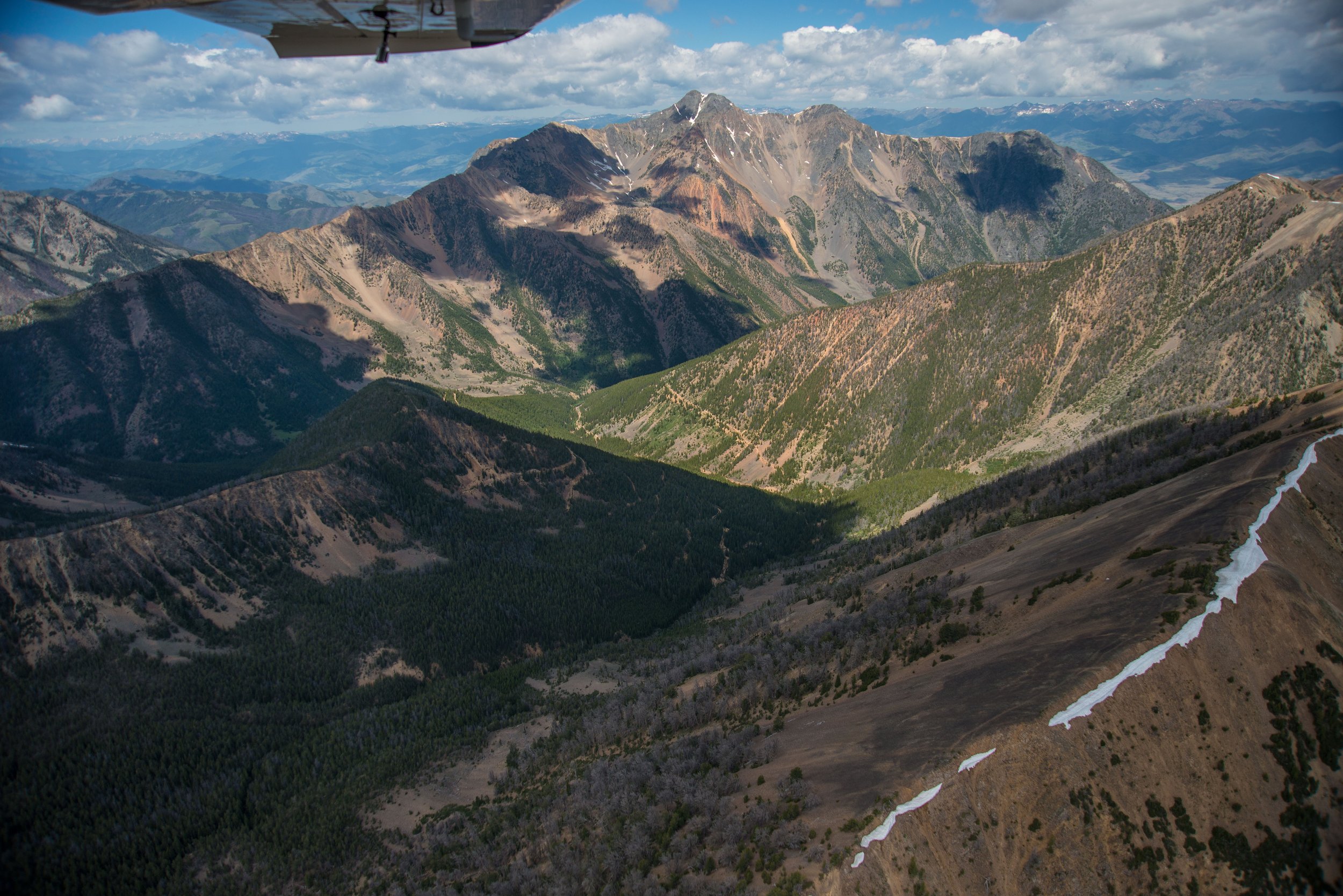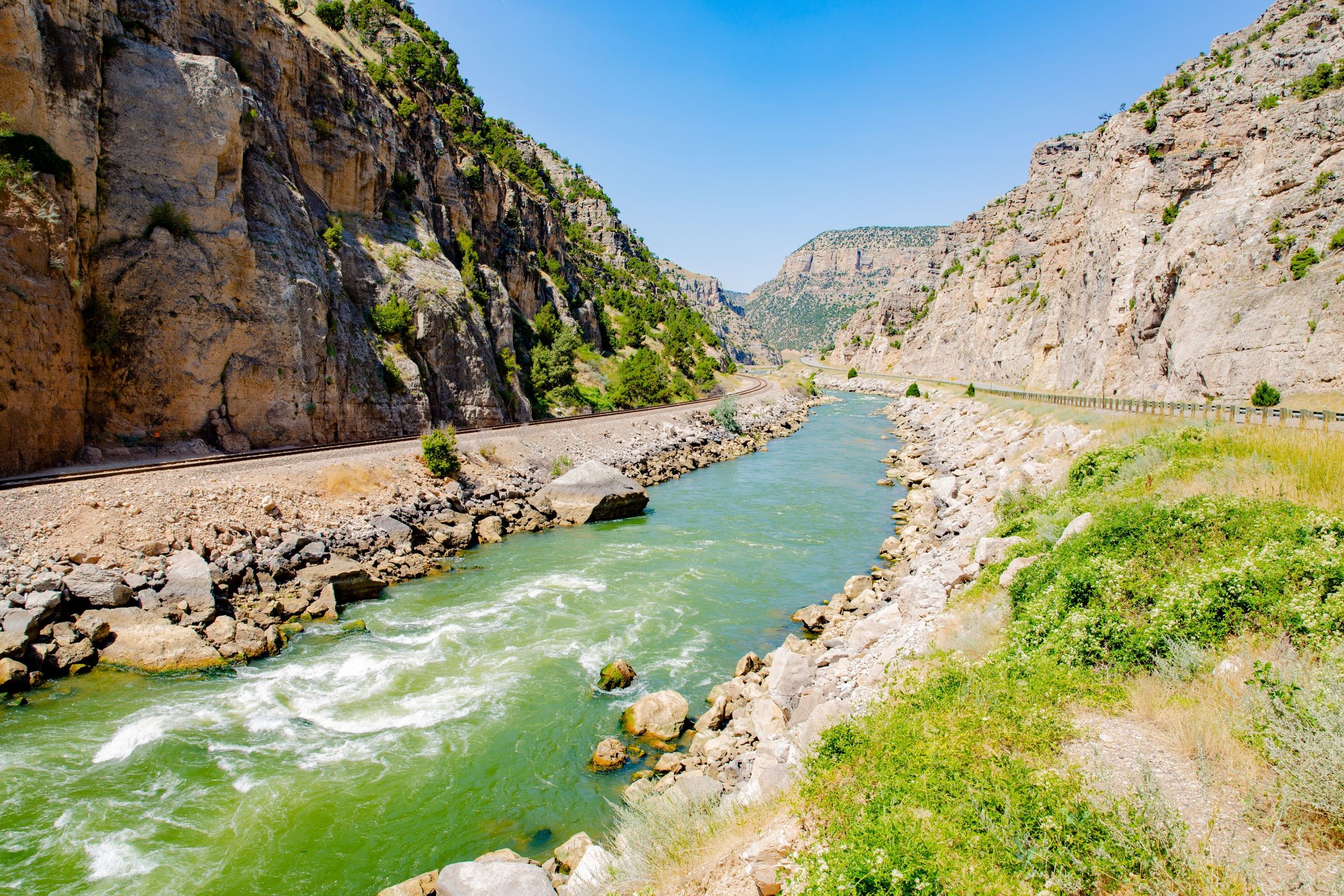Apsáalooke place names in Greater Yellowstone, part 2
Since time immemorial, the Greater Yellowstone Ecosystem has been stewarded by Indigenous Peoples who view its lands, waters, and wildlife as sacred. The Indigenous way of caring for the land acknowledges its life-giving energy, is centered on reciprocity, and uses Traditional Ecological Knowledge to keep the ecosystem in balance. Today, over 49 Tribes are keepers of this knowledge and retain deep connections to this remarkable place.
We’re sharing the place names of beloved rivers, mountains, and other natural areas throughout the Greater Yellowstone Ecosystem. The Apsáalooke/Crow people and their ancestors bestowed the following names, and we encourage you to use and share this knowledge as you explore the Greater Yellowstone Ecosystem.
Gallatin River – Baáschuuaashe or “Berry River”
The Baáschuuaashe is a classic Greater Yellowstone river. Found near the northwestern corner of Yellowstone National Park, this river is a recreational hub and refuge for native trout. You can always find someone fishing, floating, or camping on the Baáschuuaashe. One of its claims to fame is being featured in the fly-fishing movie A River Runs Through It. The Baáschuuaashe flows through the Valley of the Flowers, a common hunting ground used by the Apsáalooke near Bozeman, Montana.
Emigrant Gulch – Bálaaannuttuua or “Where They Get Money”
An aerial view of Bálaaannuttuua, just north of Yellowstone National Park. (Photo Bill Campbell/EcoFlight)
Bálaaannuttuua is nestled in the Absaroka Range, just north of Yellowstone National Park. If you’ve driven through Paradise Valley to or from the northern entrance to the park, you’ve passed Bálaaannuttuua. The area is an important corridor for moving and migrating wildlife. In the late 1860s, the gulch was the site of a small gold mining boom, hence the name. More recently, Bálaaannuttuua and its wildlife habitat was threatened by a risky gold mining proposal, which GYC helped stop by passing the Yellowstone Gateway Protection Act.
Dragon’s Mouth Spring in Yellowstone – Dappíish Iilápxe
The gurgling, booming sounds coming from Dappíish Iilápxe evoke the growls of a creature deep within the mouth of the cave. Copious amounts of stream rise, giving the appearance of smoke billowing from a dragon. Dappíish Iilápxe is a hot spring located on the Yellowstone River as it leaves the northern tip of Yellowstone Lake. In the 1800s, an Apsáalooke shaman named Fringe received one of his visions at Dappíish Iilápxe. The Kiowa Tribe also share an important connection to Dappíish Iilápxe. Their history states this is where the Creator gave them the Yellowstone area as their home.
Wind River – Hucháashe or “Wind River”
The Wind River as it travels through the Wind River Canyon in Wyoming.
Meandering through the Wind River Indian Reservation, the Hucháashe provides water to the Eastern Shoshone and Northern Arapaho people who live there. The cold water of the Hucháashe is home to a healthy trout population and brings recreators from across the ecosystem. The river is also the center of a Treaty dispute. GYC is asking the federal government to review the social, economic, and cultural injustice of Diversion Dam on the main stem of the Hucháashe. These irrigation systems have diverted water—life’s most important natural resource—away from the Eastern Shoshone and Northern Arapaho for more than a century. Improved access and use to water within Hucháashe is just one of the ways we can do better for Indigenous Peoples.
SOURCES:
The Apsáalooke Place Names Database on the Little Big Horn College Library
Any thoughts or corrections? Reach out to Senior Digital Communications Associate Emmy Reed at ereed@greateryellowstone.org.


